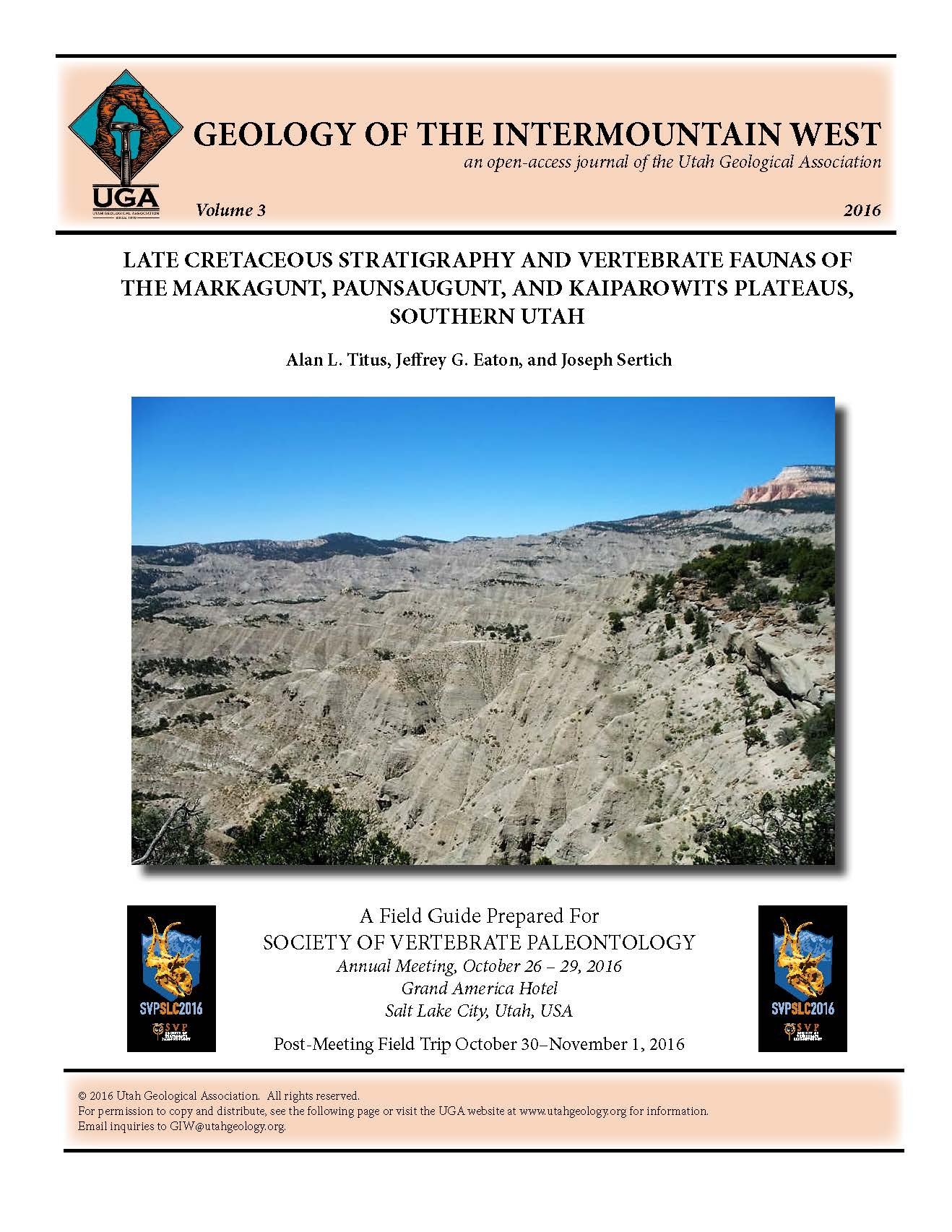Late Cretaceous stratigraphy and vertebrate faunas of the Markagunt, Paunsaugunt, and Kaiparowits plateaus, southern Utah
Abstract
The Late Cretaceous succession of southern Utah was deposited in an active foreland basin circa 100 to 70 million years ago. Thick siliciclastic units represent a variety of marine, coastal, and alluvial plain environments, but are dominantly terrestrial, and also highly fossiliferous. Conditions for vertebrate fossil preservation appear to have optimized in alluvial plain settings more distant from the coast, and so in general the locus of good preservation of diverse assemblages shifts eastward through the Late Cretaceous. The Middle and Late Campanian record of the Paunsaugunt and Kaiparowits Plateau regions is especially good, exhibiting common soft tissue preservation, and comparable with that of the contemporaneous Judith River and Belly River Groups to the north. Collectively the Cenomanian through Campanian strata of southern Utah hold one of the most complete single region terrestrial vertebrate fossil records in the world.

Copyright (c) 2016 Utah Geological Association

This work is licensed under a Creative Commons Attribution 4.0 International License.




